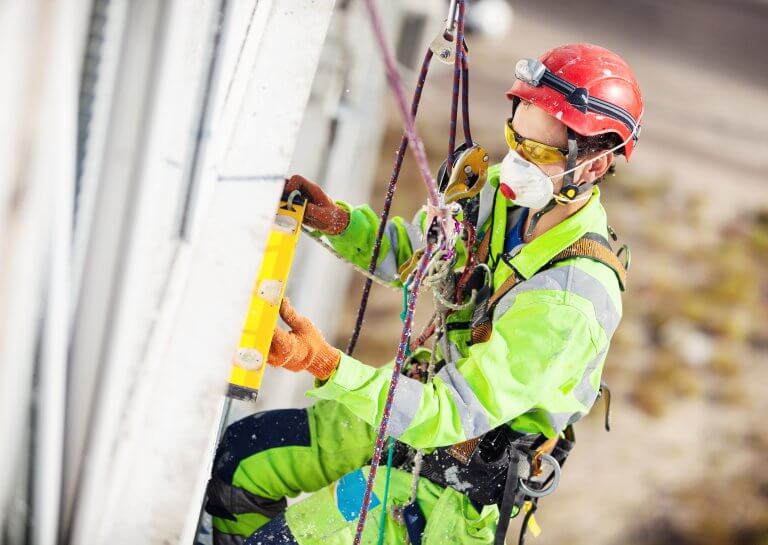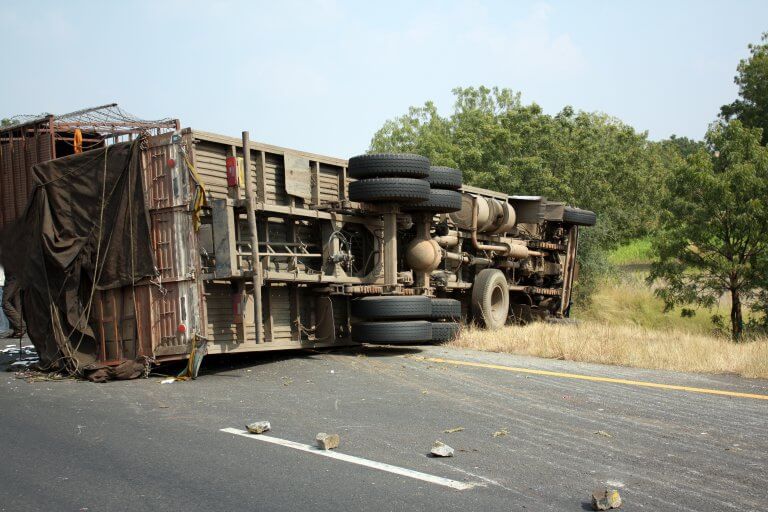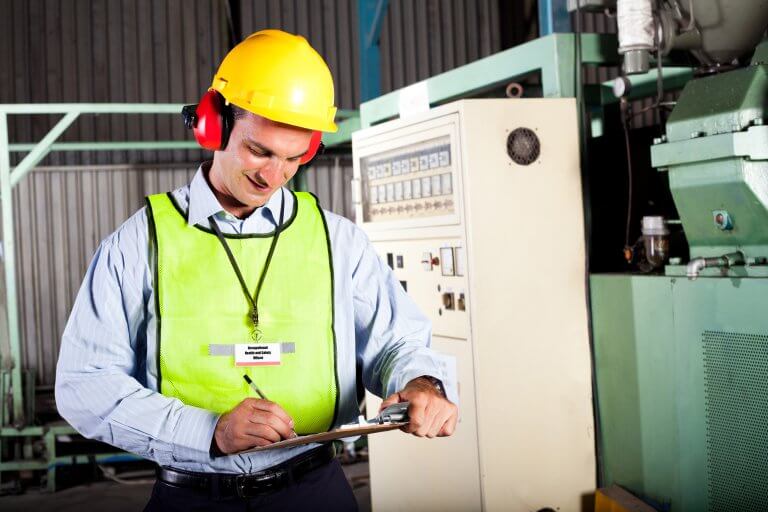The workforce that works in this strategic sector is prone to serious accidents and complex occupational diseases, which can be easily prevented with the implementation of more efficient and effective comprehensive strategies.
The food industry is one of the most strategic and relevant sectors of the productive sector, since a large number of economic, political and social systems throughout the world depend on its efficiency.
A valuable part of this efficiency is based on the effort of its human capital, without which it would not be possible to meet the requirements of more than 8 billion inhabitants, who need food every day to survive.
In this context, the occupational health and safety policies of these industries take on special relevance, which, except for very specific cases, do not differ greatly from those that must be applied in any activity that uses machinery and mass production.
Characterization of Occupational Risks in the Food Industry
The main occupational hazards involved in food production can be grouped into four groups:
- Accidents
- Occupational Illnesses
- Work fatigue wear
- Staff dissatisfaction
In the case of accidents, they are mostly caused by: overexertion of the musculoskeletal system; hitting stationary or moving objects; cuts from misuse of tools or equipment, such as knives, power cutters, and processing machines; falls to ground level; and entrapment between objects.
The most characteristic injuries are: dislocations, sprains, muscle strains, capillary abrasions and cuts (shallow or deep), fractures, concussions, internal injuries, burns, scalds and frostbite.
Among the main health problems, we find: respiratory and musculoskeletal disorders; skin diseases; contact allergies; hearing impairment and exposure to extreme temperatures.
Hand tool Injury Hazards
Moving elements such as saw blades and mechanical knives often cause numerous accidents, especially in meat companies. These types of injuries can be minimized if we design an adequate use and maintenance program for the equipment.
In addition, we must set up adequate work areas, select the appropriate instruments for each task, and always use resistant protective gloves and aprons. But the real main point lays in the correct education and training of workers, so that they use both knives and manual tools, as well as mechanical cutting devices. Always in a safe way.
As preventive measures, PPE individual protection equipment is also recommended for each specific activity (such as metal mesh gloves in cutting operations; safety goggles in shredding operations, and safety boots for handling and storage).
Entrapment Hazard
Accidents caused by transmission machines are rare, but no less serious. This risk is usually frequent in the accessible moving parts of the work equipment (such as packaging dispensing rollers, shafts and conveyor belt chains). They can also be caused by overturning vehicles (mainly forklifts); or by the collapse of stored products.
To prevent them, it is suggested to protect the dangerous areas of machines and tools with mobile, adjustable or retractable guards, immaterial barriers, or photoelectric cells. On mechanical handling equipment, in particular conveyors, we must also pay particular attention to projections that shift during movement.
In filling and sealing machines, drums, pulleys, gears and conveyor belts must be adequately protected. It is also advisable to use effective devices to protect the removal operations of cans with sharp edges or broken glass.
Likewise, it is advisable to place accessible and clearly visible emergency switches, which allow the machines to be stopped safely in the event of an accident.
In turn, the staff must not wear objects that can get caught in the machines, such as rings, bracelets, or other pendants. They must use tight protective clothing and resort to other elements such as gloves and safety glasses.
Risk of Burns
Burns occur in areas close to incandescent materials and high-temperature ovens, generally due to staff carelessness or lack of signage and inadequate lighting.
Burns and injuries caused by hot liquors and cooking equipment, as well as steam and hot water used to clean equipment, are also common.
More serious accidents can also occur due to boiler explosion, lack of regular controls, poor training of workers, lack of adequate procedures or inappropriate maintenance.
For this reason, all equipment that uses steam or hot water must receive periodic deep maintenance to avoid leaks or large explosions.
In the other hand, prevent electrical burns, we require proper grounding and periodic maintenance in order to control the risk of unexpected discharge, especially in damp locations.
In addition, it is essential to use outlets equipped with ground fault circuit interrupters, and to practice proper electrical classification of all hazardous environments.
Exposure to Chemical Contaminants
Another of the most frequent causes of occupational accidents and illnesses in the food industry is exposure to chemical contaminants (solid, liquid and gaseous), due to the fact that a large number of them are part of industrial processes.
They include, for example, anhydrous ammonia, methyl chloride and other halogenated aliphatic hydrocarbons used in freezing processes and in cold rooms. All of them can cause poisoning and serious burns. Trichloroethylene, hexane, benzene, carbon monoxide (CO), carbon dioxide (CO2), and polyvinyl chloride (PVC) also abound.
Of all of them, the most dangerous is CO, since it is a colorless and odorless gas, and very difficult to detect. It is present in smoke factories with poor ventilation, grain silos, wine fermentation cellars and fish warehouses, among other places.
In turn, the CO2 is used to refrigerate and freeze products that need to be transported to distant destinations, such as export markets.
The main symptoms of poisoning from overexposure to CO and CO2 include migraines, dizziness, drowsiness, nausea and vomiting. In extreme cases, it can cause death, so places where there is a high concentration of both gases should always be adequately ventilated.
All industries that use any of these elements must design and implement appropriate practices for their handling, including the use of Individual Protection Elements such as masks, goggles, suits and special footwear.
Constant atmospheric measurements must also be carried out in the workplace, to ensure that the concentration of harmful compounds is below the established maximums.
The degree of contamination must be analyzed frequently, especially when we make changes to the production line or to the characteristics and composition of the chemical products used.
An effective safety strategy also requires administrative controls such as worker rotation (to reduce the period of exposure) and scheduling of hazardous tasks outside of regular shifts (to reduce the number of people potentially exposed).
Exposure to Biological Contaminants
The transmission of infectious and parasitic diseases of animal origin constitutes another important health risk within the food industries. These are very common conditions, especially in the meat and dairy sectors, due to direct contact with infected animals. Risk that farmers and rural breeders also run.
In all these cases, prevention is especially complex, given that the animals do not always present symptoms of illness, so it is essential that the worker scrupulously takes care of his personal hygiene. This will prevent the person at risk from contracting and spreading infectious and/or parasitic diseases.
Therefore, bathrooms, sinks, showers, uniforms, personal protective equipment and hand towels used by staff must be washed, and even sterilized, frequently. Wounds, likewise, should always be disinfected, bandaged, and covered with protective insulating material until healed, regardless of their severity.
In addition, it is essential to apply intensive hygiene in the workplace, including thorough washing and disinfection of equipment, utensils, machinery and all surfaces in contact with animal tissues. This strategy includes the control and extermination of insects and rodents, as well as the absolute exclusion of dogs, cats and other domestic animals from work areas.
Exposure to Hazardous Noises
Continuous and prolonged exposure to excessive noise from certain mechanical processes, such as the production of packaged foods, can lead to serious hearing disorders such as masking of hearing, occupational deafness, and various abnormalities in blood pressure, heart rate, rhythm, and volume of the breath.
Workers will also suffer from stomach and intestinal spasms and nervous disorders. At the psychological level, stress and anxiety will appear, which can vary according to personal susceptibility, the duration of exposure and the frequency and intensity of the noise.
Therefore, it must be ensured that exposure to noise is not dangerous for workers, applying constant noise controls and providing appropriate personal protection elements, such as certified helmets and earplugs. It is also convenient to carry out annual audiometric tests, to verify the damage that the personnel suffered due to exposure to repeated intense noise.
A side effect of using machines in food production is excessive exposure to vibration. This causes, among other problems, musculoskeletal disorders in the wrists, elbows and shoulders. The degree of ailment will depend on the kind of machine, how it is used and its level of oscillation. In fact, the high and sustained vibration can cause bony protrusions and the gradual destruction of the joints, which translates into severe pain and even limited mobility.
Effects of Thermal Stress
Extreme temperatures are often recorded in the work areas of the food industries. For example, there are people who work in cold rooms at temperatures of –18°C and even lower. They must use special insulating clothing, but also require conditioned rest rooms, where they can consume hot drinks.
On the other hand, those who work near ovens and steam cookers are exposed to radiant and moist heat. This situation can cause stress that tends to increase during seasonal changes and heat waves.
To prevent its effects, it is recommended to consume plenty of fluids and increase the level of salt in food, until the worker acclimatizes (after 5 to 10 days have elapsed).
Effects of Occupational Fatigue
The risk of fatigue in the food industry is mostly physical, but no less important. For example, in numerous production centers, the labor force carries out energetic and repetitive tasks which can produce chronic fatigue due to overexertion, forced postures and repetitive movements.
These situations can generate fractures, contractures, sprains, tendinitis or dislocations. For this reason, it must be ensured that workers do not perform tasks that require them to adopt extreme postures, exert great intensity forces or perform repetitive movements without rest.
Risks caused by Job Dissatisfaction
The characteristics of the work, poor personal relationships, monotony or excessive mechanization of tasks also negatively affect the mental and physical health of workers in the food industry.
In addition, the convergence of work and personal factors can lead to a high level of dissatisfaction, which among other effects will generate behavioral changes, irritation, worry, lack of concentration, discouragement, loss of appetite, depression, absenteeism and poor performance.
This situation, combined with possible personal and/or family factors, can cause reluctance and loss of concentration, which, in turn, will generate a greater risk of accidents.
This psychological condition can also be expressed in cardiovascular, hormonal and nervous disorders, as well as changes in sleep cycles, stress, high blood pressure and heart attacks.
For this reason, it is essential that the worker has, from his first day, the maximum information about his work, tasks and assigned duties. Specific studies must also be carried out to anticipate the causes that may cause psychosocial problems, in order to take the necessary preventive and/or corrective measures.
At the organizational level, in turn, all contingencies that may affect the working day must be planned. It is essential to pause or alternate tasks to avoid monotony and repetition of elementary tasks. This motivates the team better, and encourages a more active participation of all its members.
Digital Solutions
Within this context of complex challenges and prevention strategies, the use of digital tools and applications, such as checklists and electronic control forms, contributes to significantly reducing the level of risk, helping to safeguard the integrity of the workforce and, consequently, to optimize the productivity of companies.
One of these modern alternatives are the security checklists based on mobile forms that DataScope provides to food companies, to improve their quality controls.
Through these specialized and accurate tools, it is possible to better control risk situations and prevent the occurrence of occupational accidents that could harm food production.







